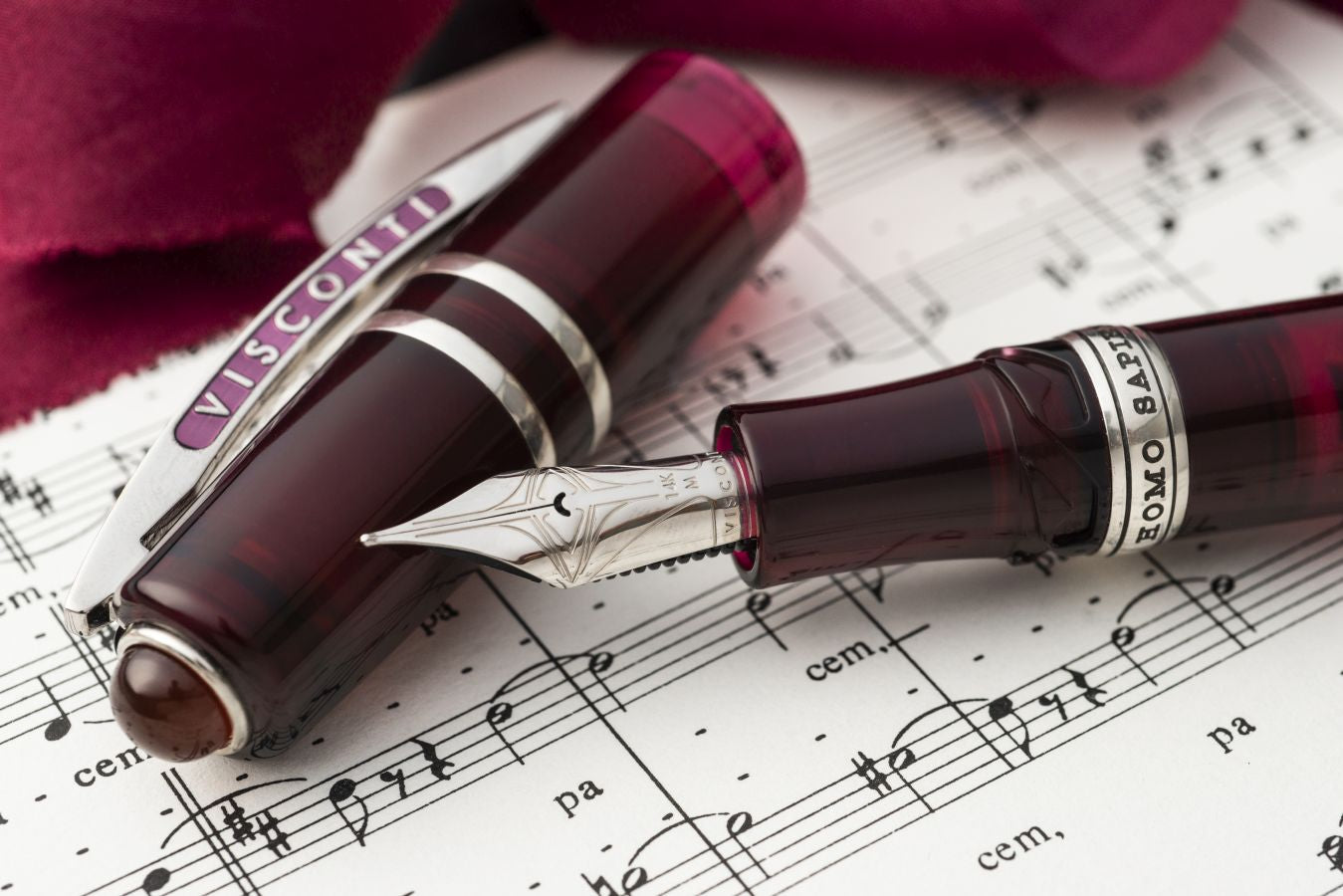The Beginnings
Before fountain pens there were quills or dip pens which had to be repeatedly dipped to replenish your ink. So something more practical was needed. Queue the development of the fountain pen.
The first recorded fountain pen was from 973 when Fatimid Caliph Al-Mu'izz Ii-Din Allah requested a pen that didn't leak over his hands and clothes. He was presented with such pen that had an internal reservoir that held ink.
There is evidence that a working fountain pen was created and used by Leonardo di Vinci during his lifetime. His ancient journals appear to show drawings of a reservoir pen that works using gravity and capillary action. Discoveries of his handwriting also appear to show him using such an invention.
Patents
There were many references to fountain pens during the 17th century. There are references from German inventor, Daniel Schwenter, to a pen made with two quills with one holding the ink inside the other.. Another to a metal pen 'to carry ink', from Samuel Pepys in 1663. The oldest known fountain pen is by Nicholas Bion with his fountain pen inscribed with the year 1702. The illustrated description, 'plume san fin' was published in 1723.
First fountain pen patents began appearing from 1809. This was an English patent for an improved fountain pen feed by Frederick Fölsch. A patent for the first self filling fountain pen with a screw fill mechanism came from John Jacob Parker in 1813. A further patent in 1819 came with commercial success from the 'Penographic' by John Scheffer. There are even still some of these pens in existence today.
Petrache Poenaru may be the man known for inventing the fountain pen. A French patent in 1827 came about for a pen made from a large swan quill.
Mass production
Once the three key components were established, iridium tipped gold nibs, hard rubber and free flowing ink, patents and production of fountain pens soared. Market leaders in the late 1800's of fountain pen sales became Cross and Waterman. By the 1880's fountain pens were becoming mass produced.
Alternative filling systems were experimented with to further improve the filling systems and to prevent leaking. Most successful were the crescent filler by Conklin and twist filler from Waterman. Waterman retained their title in market leaders by later releasing the lever-filler. 1908 saw Waterman release their safety-pen, this saw the nib retract into itself and create a seal to prevent leaks.
1929 saw Pelikan release their first fountain pen, the Model 100. Other notable releases of the time were the Parker Duofold and Vacumatic fountain pens.
The Ballpoint pen
Then along came the ballpoint pen in the 1940s. They didn't start off as a huge success. Ballpoint pens were very expensive so a fountain pen was still the way to go for the more affordable method of writing. As the development of the ballpoint pen got better the sales also grew. Sales quickly overtook that of fountain pens and stayed there.
Over time the use of fountain pens has declined probably due to the ease and accessibility of ball pens. Some big manufacturers made fountain pens more of a collectors item or status symbol and out of reach to the regular writer. However, in more recent years modern companies have brought the fountain pen back to it's intended use. They have become affordable again and more appealing to younger users. Schools are encouraging pupils to use a fountain pen again to improve their writing.

